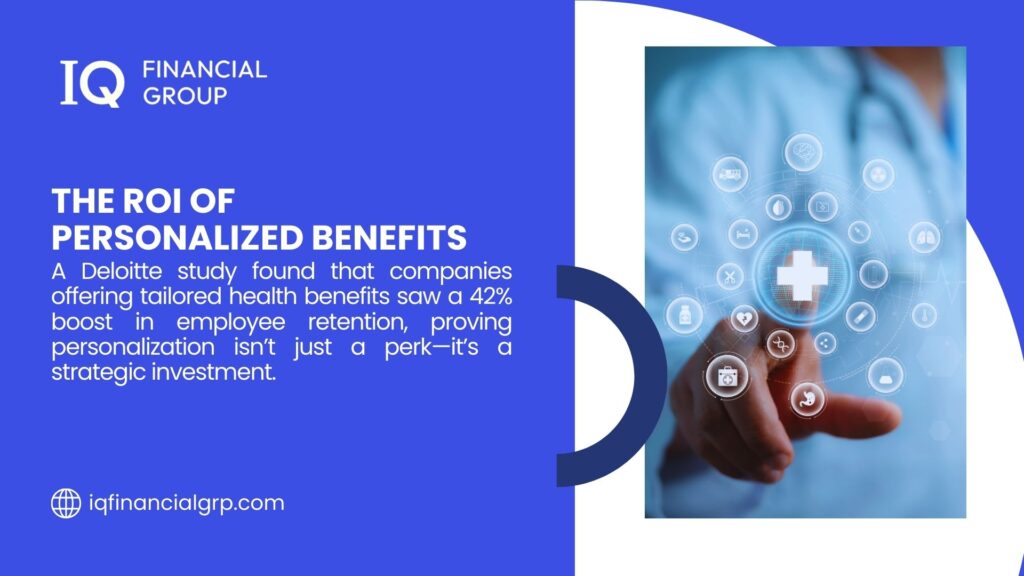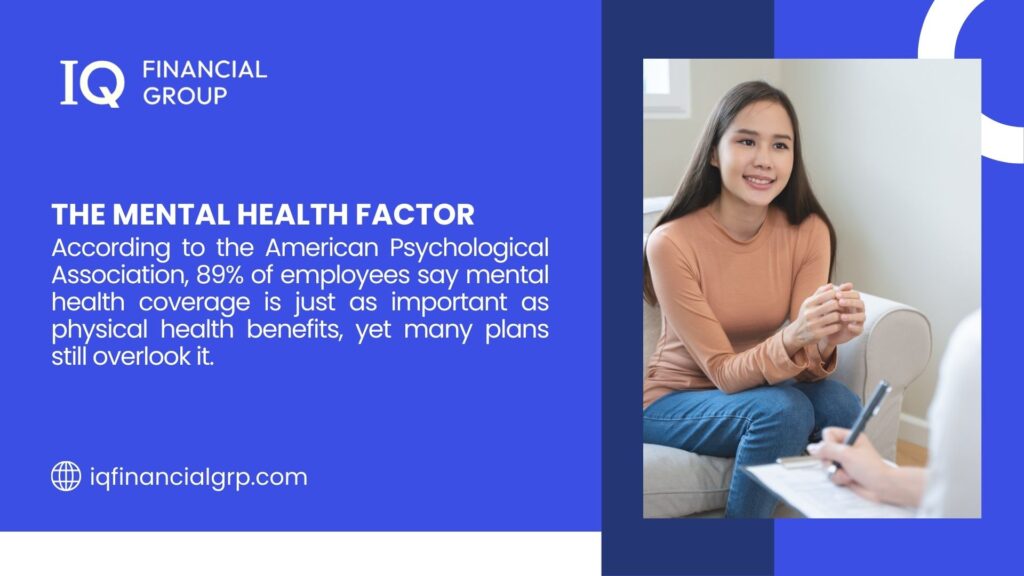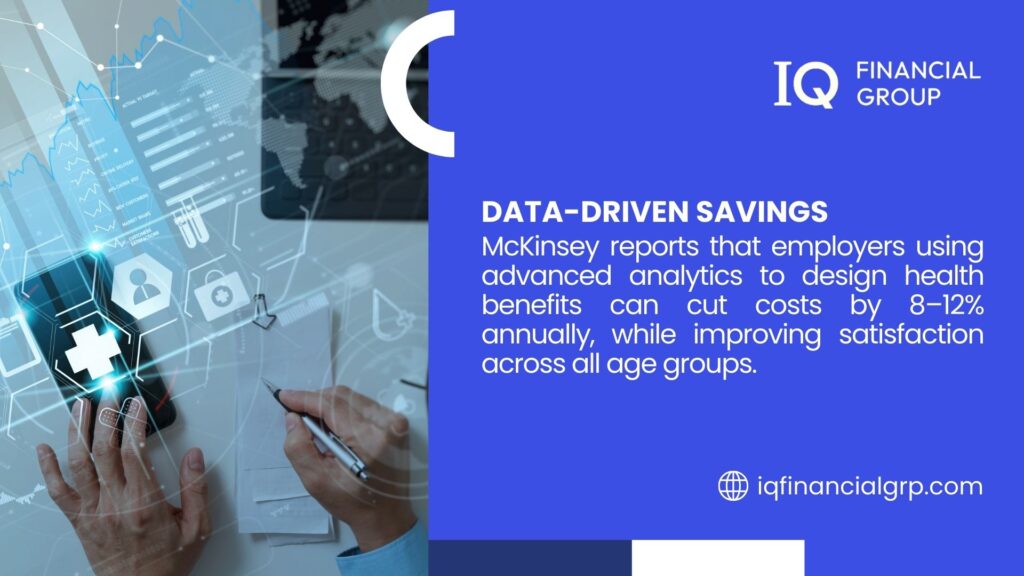Health insurance has become a headache for most companies. Premiums keep rising. We’re looking at over $16,000 per employee next year, which is nearly a 10% jump from where we are now. Meanwhile, employees complain their benefits don’t match what they actually need.
Personalized health insurance for employees is becoming necessary. Research shows that when employees can customize their benefits, 78% say their employer cares about their well-being. When they can’t? That number drops to 29%.
The workplace looks different than it did even five years ago. Companies have employees from their early twenties to their sixties, all with different health concerns, family situations, and financial priorities. A recent graduate might want mental health coverage and telehealth options.
Someone with teenagers needs family coverage and orthodontic benefits. A pre-retiree probably cares more about managing chronic conditions and prescription costs.
What is Personalized Health Insurance
Traditional group health insurance works like buying everyone in the company the same car. It might be a decent car, but it doesn’t fit everyone’s needs. Personalized health insurance for employees is more like giving people a car allowance and letting them choose what works for their situation.
Smart personalization offers meaningful choices without creating chaos. Maybe it’s three plan levels with different deductibles. Perhaps it’s base coverage plus optional add-ons for dental, vision, or mental health services. Sometimes it means letting people choose their provider networks based on where they live or which doctors they see.
The companies doing this well report some interesting results. Employee satisfaction goes up, obviously. But healthcare costs often become more predictable because people choose coverage that matches their actual needs instead of paying for stuff they’ll never use.
Different Generations Want Different Things
Managing benefits for multiple generations requires understanding what each group values. Younger employees often prefer lower monthly costs, even if it means higher deductibles.
They’re generally healthier and want to maximize their take-home pay. Many appreciate health savings accounts because they’re thinking long-term about building financial security. They also expect technology integration—mobile apps, telehealth options, and quick online access to information.
Mid-career employees typically need comprehensive family coverage. They’re dealing with kids’ healthcare needs, maybe helping aging parents, and starting to worry about their own health as they hit their forties and fifties. This group often values stability and broad provider networks over cost savings.
Older employees usually want comprehensive coverage with lower out-of-pocket costs. They’ve often developed relationships with specific doctors and don’t want to change providers. Many are thinking about healthcare as part of retirement planning, so benefits that bridge to Medicare become important.

How Much are Health Insurance Premiums?
Health insurance premiums have jumped 52% in the past decade. That’s way ahead of wage growth or general inflation. Companies can’t just absorb these increases forever, and employees can’t handle unlimited cost-shifting either.
Some companies are moving to self-funded plans, which gives them more control over costs and design options. Instead of paying fixed premiums to insurance companies, they pay actual claims plus administrative fees. It’s riskier in some ways, but it allows much more customization and can save money if managed well.
Technology is making personalization possible in ways that weren’t feasible before. Analytics platforms can crunch employee demographics, claims data, and usage patterns to identify what benefits actually provide value to different groups. This takes the guesswork out of benefit design.
Healthcare costs hit employees’ overall financial situation hard. Smart companies are connecting health benefits with broader financial wellness programs.
HRA programs offer flexibility by letting employers contribute money that employees can use for healthcare expenses. These can be tailored to different employee groups, maybe more support for lower-paid workers or families with special needs.
For higher-earning employees, coordinating health benefits with tax planning strategies becomes valuable. The intersection of healthcare benefits and tax optimization represents an area where personalization can provide significant value.

Controlling Costs Through Smart Design
One major advantage of personalized health insurance for employees is eliminating waste in benefit spending. Traditional insurance often covers things many employees don’t need or use. Personalization allows more precise targeting.
Prescription coverage provides a good example. Employees taking expensive medications need robust pharmacy benefits. Healthy employees might trade comprehensive drug coverage for lower premiums. Geographic differences create similar opportunities, rural employees might value telehealth more than urban employees with easy access to multiple facilities.
Plan design needs to prevent adverse selection while offering real choices. This might mean offering plans with similar overall values but different cost-sharing structures. People can choose higher deductibles with lower premiums or vice versa, but expected costs stay similar across options.
Wellness programs can encourage healthy behaviors while providing extra support for people with chronic conditions. These might include personalized coaching, disease management resources, or targeted interventions that improve outcomes while managing costs.
Using Data to Target Resources
Advanced platforms use predictive modeling to identify employees at risk for expensive conditions. Early identification enables interventions that can prevent or delay problems while reducing long-term costs.
These interventions might include enhanced preventive care for at-risk employees, personalized wellness coaching, or early access to disease management programs. The key is targeting resources where they help most rather than applying generic programs everywhere.
Employees need confidence that health information stays confidential and won’t affect employment or advancement. Clear policies and strong data protection build the trust necessary for effective programs.

Common Problems and Solutions
Every company implementing personalized health insurance for employees faces similar challenges, but successful ones develop effective responses.
Choice overload is probably the biggest issue. Too many options overwhelm people and lead to poor decisions or decision avoidance. Successful programs balance meaningful choice with manageable complexity.
Default options help address overload. Well-designed defaults work for most employees while allowing customization for those who want control. Research shows many people stick with reasonable defaults, reducing decision stress while preserving flexibility.
Guided processes help people navigate complex choices by asking relevant questions and narrowing options based on individual circumstances. This helps people focus on decisions that matter for their situations.
Administrative complexity inevitably increases with personalization. Companies need strategies to manage this without overwhelming their HR departments.
Technology provides the best approach to complexity management. Integrated platforms handle enrollment, changes, reporting, and communications through unified systems. This reduces manual work while improving accuracy.
Outsourced administration offers another option, particularly for smaller companies lacking internal expertise. Professional administrators handle technical aspects while companies focus on strategy and employee relations.
Get the Personalized Benefits Your Employees Want
Transitioning to personalized benefits requires planning, technology partnerships, and change management. Companies that approach this systematically can create significant competitive advantages through superior benefits and better cost management.
IQ Financial Group specializes in helping organizations design and implement personalized benefit strategies that create competitive advantage while managing costs effectively. Our approach considers the full spectrum of employee needs and organizational objectives.
Organizations interested in personalized health insurance can benefit from expert consultation that evaluates current programs, identifies opportunities, and develops implementation strategies tailored to specific needs.

